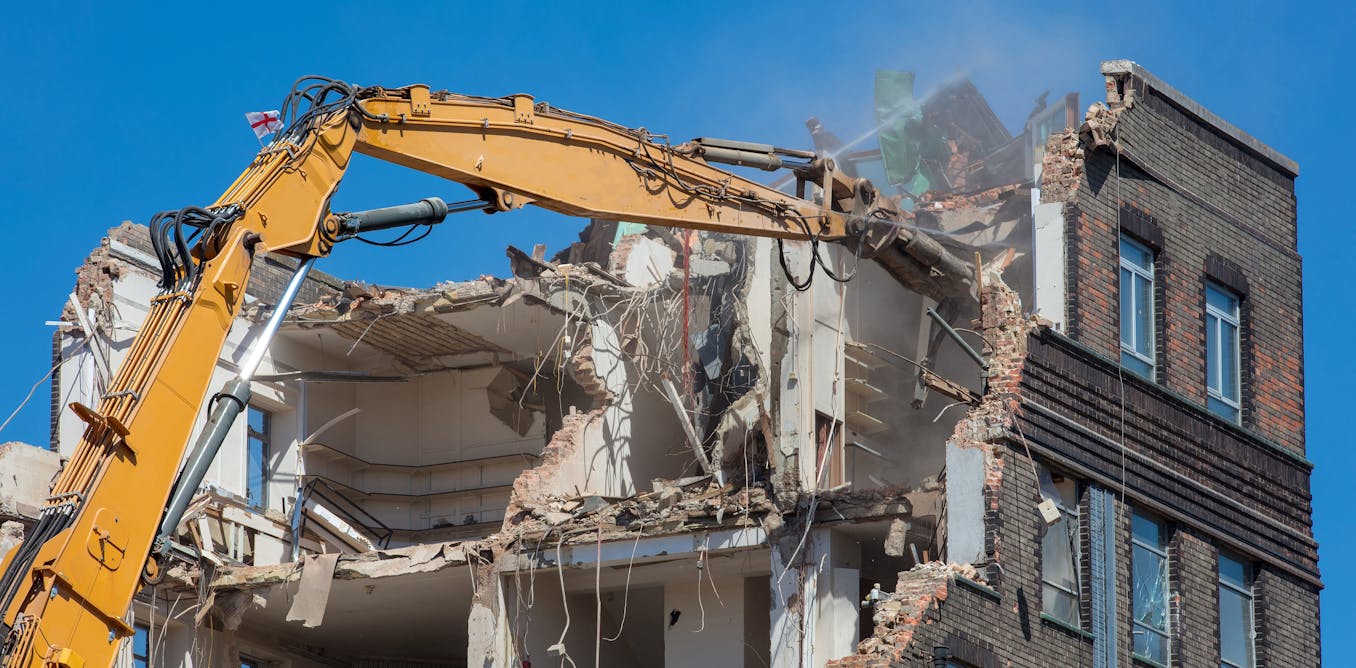The construction industry is not on track to decarbonise by 2050 and uses more resources than most. In 2020, the UK produced a staggering 59.1 million tonnes of non-hazardous construction and demolition waste. Despite most of this material (92.6%) being recycled, much of it was crushed for use in roads and building foundations.
Why is this a problem? Downcycling, as opposed to upcycling, turns high-quality materials into lower-quality products by crushing and mixing them, preventing future use in their original form.
Deconstruction over demolition
Think of buildings as material banks filled with reusable components for future construction. Deconstructing buildings instead of demolishing them – carefully disassembling and salvaging their materials for reuse – can repurpose much of what would otherwise be waste.
Existing buildings are treasures
Imagine if each material in a building had an ID: a material passport consisting of a physical label linked to a database. For example, a glass panel might have a product passport composed of different material passports relating to the materials used to make it (sand, soda ash an limestone).
A door without a material passport might go to waste. The same door with an ID has its physical dimensions, materials, manufacturer information and product details documented. Such a system could prevent these valuable materials being lost or wasted and enable their reuse as a valuable item.


